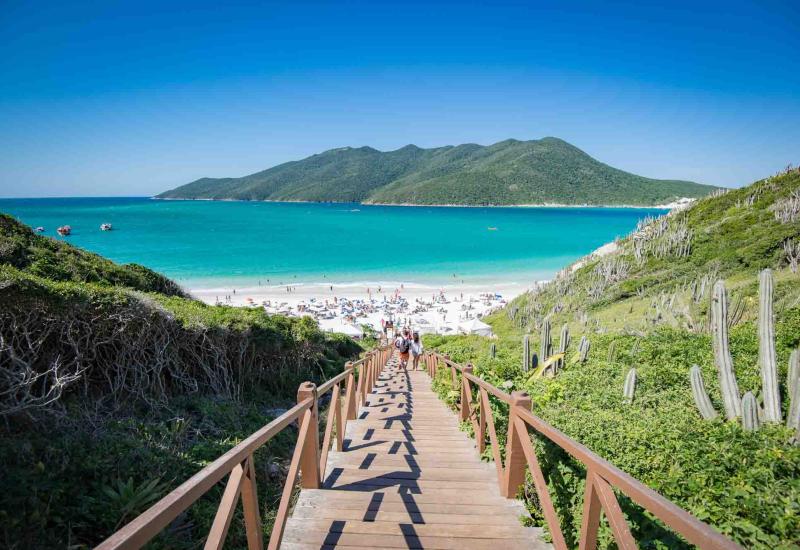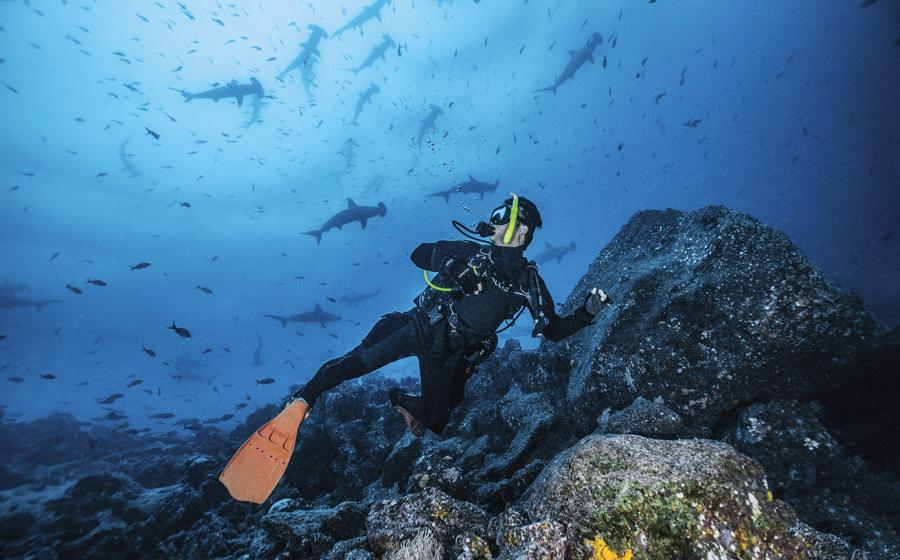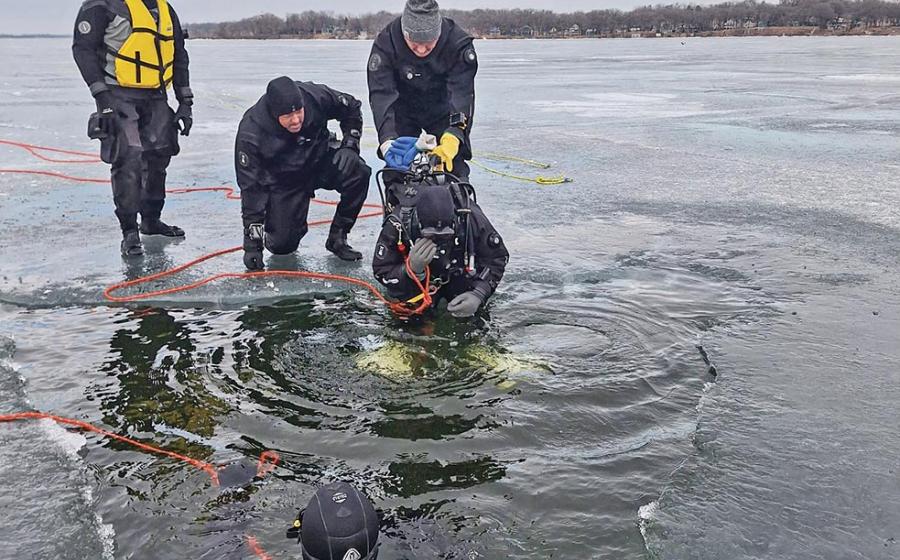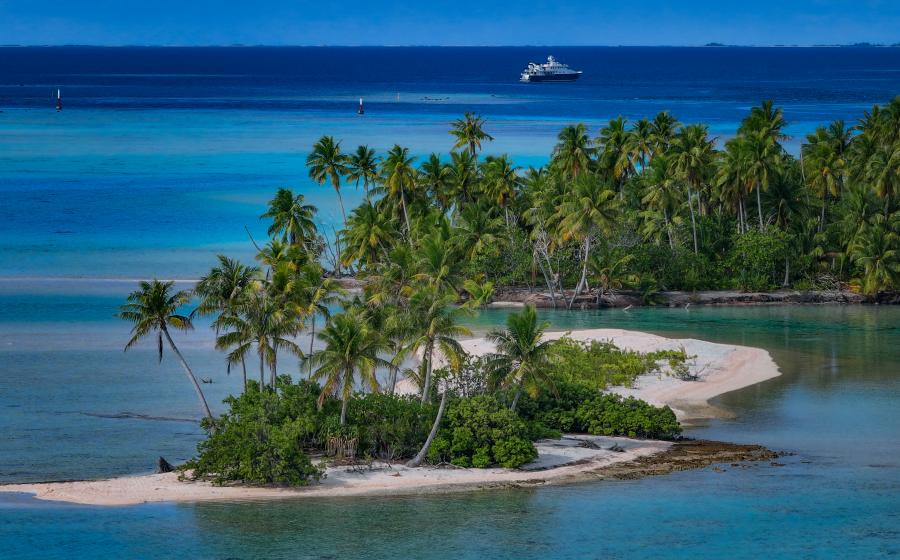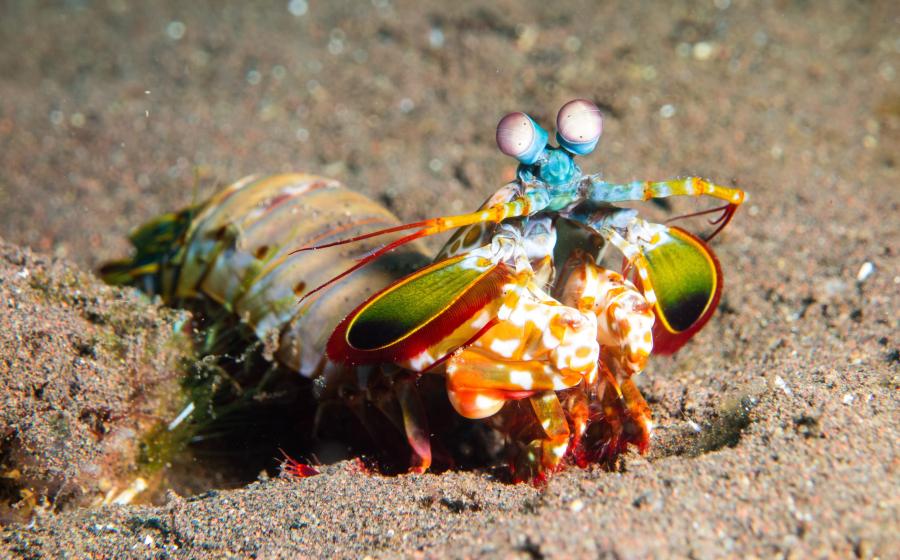Dive to the Beat: Scuba Diving in Brazil

Kadu PinheiroColorful coral and amazing underwater architecture makes Brazil diving one-of-a-kind.
Encountering the Culture
There’s a food festival at Zé Maria tonight, and the restaurant is absolutely packed. On a large wooden table sit bowls of ceviche, slabs of fish, ground cassava roots, jackfruits and a paella platter so big that you could surf on it. At any given moment you can look around the room and find a couple kissing.
“Brazilians are very hot,” says Carlos Eduardo Pinheiro from across the table. “Kadu,” as everyone calls him, is one of Brazil’s best underwater photographers, a bubbly man whose eyes flash when he speaks.
“As guys, you see each other and it’s, ‘Hey, man! How you doing?’” he booms, mimicking a hug that once left me winded. “With a woman, it’s even more so. And if you get three Brazilians together on a dive boat, watch out!” His eyes widen. “So much bagunça!”
Bah-GOON-sah is Portuguese for “mess” or “disorder,” but it also neatly sums up every cliche you know about Brazilians and their roisterous approach to life. It is spontaneous, loud and exhausting. Bagunça is what keeps the carnival masses dancing for days, and why samba is sensual and tap is not. The energy will spike this summer, when Brazil hosts the World Cup soccer tournament, and again in 2016 when the country hosts the Olympics. Brazil has lots of true disorder too, but it isn’t the mess so much as what you do with that mess that matters. As one local told me, “Sometimes the happiest people have the least.”
Maybe you’ve seen this at work in the Caribbean among the growing ranks of Brazilian divers now venturing abroad. Catch them in their home waters, and you wonder why they’d ever leave. The world’s fourth-largest country (geographically speaking) has thousands of miles of coast with rich lagoons and zesty currents that sustain whales, sharks, rays and huge schools of fish. The rocks and corals have tones that could baffle a Crayola tech. There are shipwrecks and submerged World War II telegraph cables. Cruise some 220 miles out to sea, however, and you’ll find what some claim to be the coolest sites of all.
Fernando de Noronha could be the Tahiti of the Atlantic if it just had pile dwellings. Far off the tip of Brazil’s northeast nose, the archipelago rockets out of the blue in a filigree of volcanic rock adorned with spectacular sea stacks, a natural harbor with hundreds of spinner dolphins, and the highest concentration of Brazil’s prettiest beaches. Only the largest of the 21 islands is inhabited, Noronha, a 10-mile-long, leafy-green diamond with 4 miles of road, 3,600 people and one very suggestive spire, a 1,050-foot-tall pinnacle called Morro do Pico. All of it is protected as a park. There are no resorts or casinos but plenty of small posadas, strange lizards and the most spectacular diving east of Hawaii. When Amerigo Vespucci shipwrecked here in 1503, he proclaimed it paradise.
Today, park rules say only 246 tourists can come to the islands each day, and I am one of them. I’m deep in a 10-day trip to bagunça my way through the best of Pernambuco, the northeastern state that includes this little-known archipelago where I arrived a few days ago. And on a Saturday night, Zé Maria is the place to be.
I’m just settling into the scene when I notice the owner, Mr. Maria, sauntering my way in a white shirt and tan slacks. He grabs a microphone, looks me in the eye and says something in Portuguese. Everyone in the restaurant turns to look at me. I have no idea what he wants me to do, until, of course, I do.
“Sing!” he says, and the room goes silent.
I don't want to sing. I want to dance. Samba, specifically. (When in Brazil, right?) The laws of bagunça say it does not matter that I’m a gangly tangle of knees and elbows, so I’ve been asking everyone, anyone, to teach me. Word travels fast on an island like Noronha, but somehow “I’d like to samba” has become “I’d like to sing.”
This all started a few days ago when I touched down on the mainland of Brazil in Recife, a sprawling city of several million people and the capital of Pernambuco. It’s probable that few Americans have heard of Recife (pronounced heh-SEE-fee), but the city is known for its colorful downtown, cool sculpture garden and, for divers, the best wreck diving in Brazil.

Kadu PinheiroThis food festival in Zé Maria is a perfect example of Brazil's loud, boisterous, and spontaneous national culture.

Kadu PinheiroJangadas (reef rafts) at the ready in Porto de Galinhas.
Brazilian Diving
It’s August, the very end of winter, and those beloved wrecks are exactly why I’m here. The change of season brings a light rain as Kadu and I drive to meet Gabriel Tenorio Katter Filho — Gaba for short — owner of PADI dive operation Aquaticos, one of just two dive shops in the city. Gaba is a large, welcoming man with a 60-foot catamaran, the biggest boat in the country for one-day dive trips.
“We have so many wrecks — 75 of them,” he explains in excellent English as we motor past cargo ships, jetties and the tidy, clay-tiled roofs of Olinda, an artsy suburb where the first European settlers arrived in the early 17th century. “We have steamships, a military patrol boat, tug boats, deep dives, shallow dives, tec dives, and places where you can see 10 nurse sharks at a time.”
The ocean is fitful and cloudy, with 30-foot visibility. I’m silently longing for the area’s antipodal summer and its glassy, clear seas. Surprisingly, they tell me conditions are still decent for diving, so we churn for an hour toward the first site, a 95-foot tug called Mercurius, purpose-sunk in about 100 feet of water. Kadu, Gaba and I ease into the 81-degree ocean as a strange, lonesome wail vibrates through my body. It takes me a moment to realize ... humpbacks.
Gaba signals for me to follow; at around 80 feet we push through a wide opening into the ship, where I cruise past a ladder, out a window and up toward the bow. There I am surrounded by thousands — maybe tens of thousands — of yellow endemic grunts called cocoroca. They swarm around me, cutting off enough light to make my gauges glow. On the second dive we explore another tug, Taurus, where I spend 45 minutes poking around the crusty prop, over the bridge and along the bow. There I stare into the gray eyes of a lazy nurse shark until my computer beeps that it’s time to come up.
Not many people speak English in Brazil, but Igor Albring, an IBM worker, and Sergio Suzuki, a Nissan employee — both from the south of Brazil — do. On the way back we chat about diving, and where I might take a dance lesson.
“How long are you here for?” Sergio asks.
“Well, I leave soon for Noronha.”
“Noronha!” he stammers. “Hey, Igor, did you hear that? He’s going to Noronha.”
“Really?” Igor asks. “One day I will go there.”
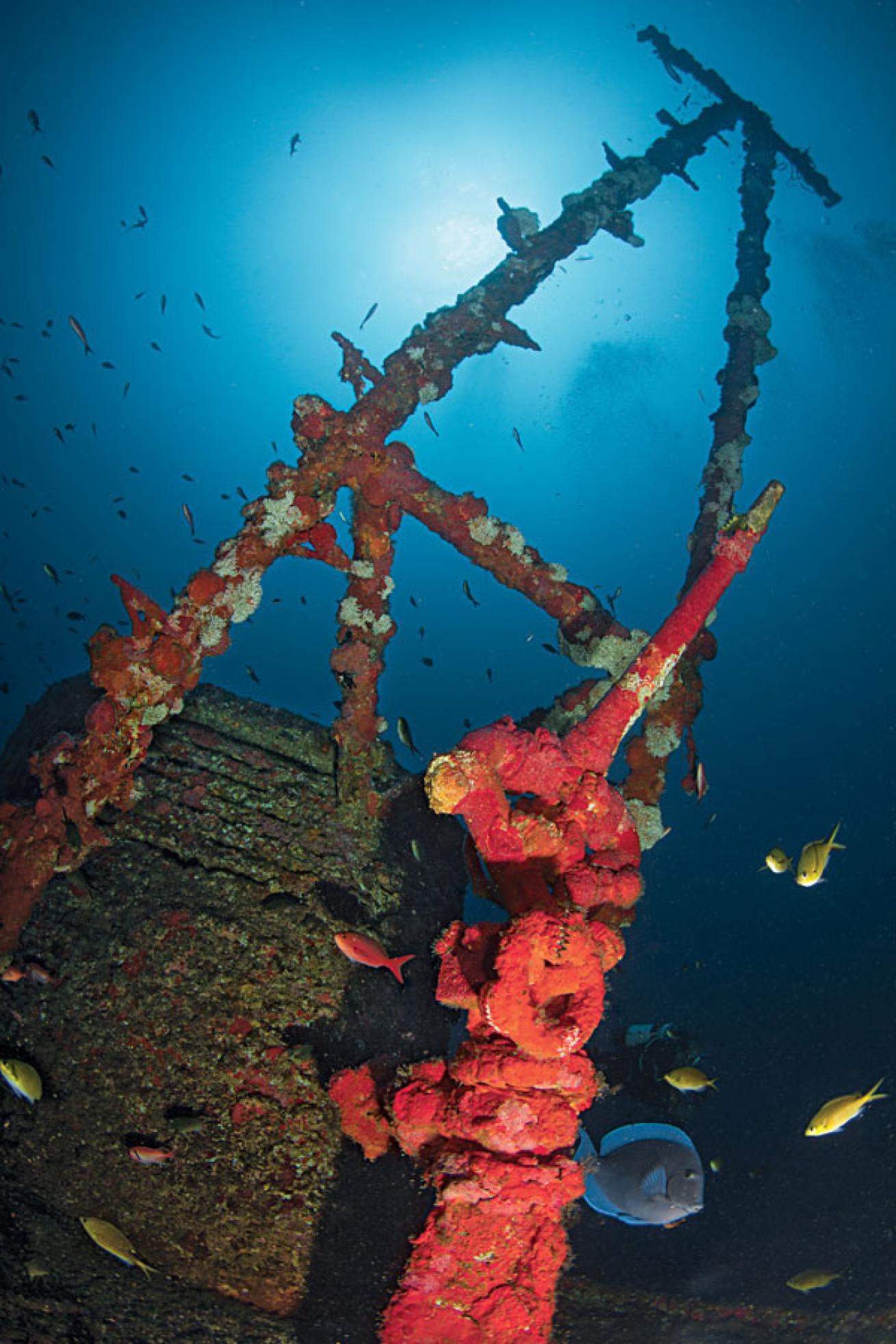
Kadu PinheiroThis shipwreck off of the Fernando de Noronha islands is one of 75 wrecks in the area.
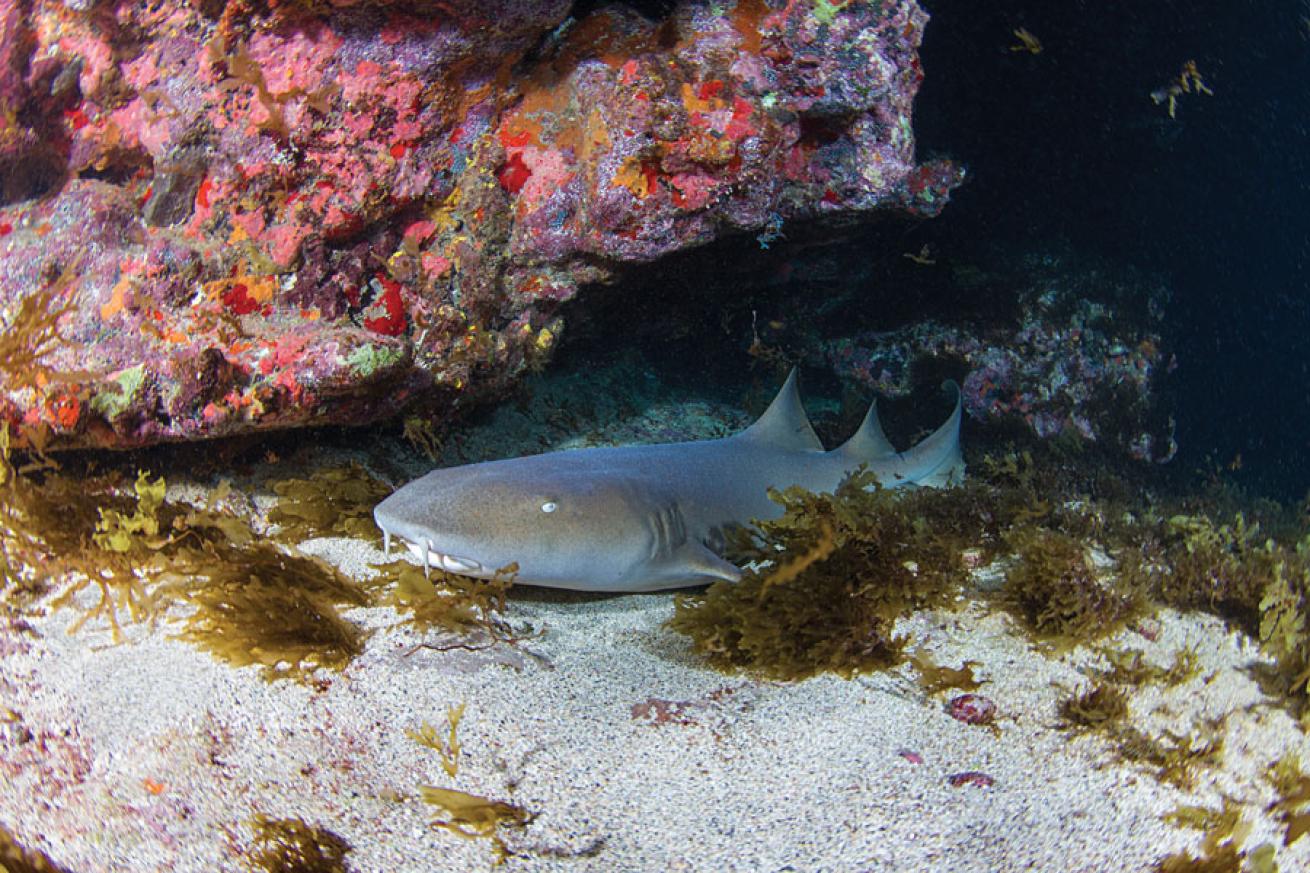
Kadu PinheiroA nurse shark sleeps on a night dive.
Fernando da Noronha
Noronha is not only exclusive, it’s expensive too. Decent rooms cost about $250 a night; dinner for two can hit $80, easy. The reason you find Brazilians in Bonaire so often is because it can be cheaper for them to vacation there than at home. That’s the messy part of Brazil.
But Bonaire doesn’t have throaty dune buggies like this — a dozen of them with the sparkle of a county-fair ride occupy every spot of the airport parking lot when I step onto Noronha. A cow meanders by. I have to be the only guy wearing pants and shoes, together.
“Crime here is zero,” says Douglas Monteiro, 25, when he picks Kadu and me up in a white Volkswagen bus. “The cops just make sure you don’t drink and drive or put too many people in your buggy.” (Five appears to be the limit.)
As the co-host of a popular underwater TV series called Naufrágios, or Shipwrecks, that airs every Thursday at 7 p.m. across the country, Douglas has become something of a celebrity in Brazil. He is handsome, with curly black hair and piercing eyes, and people regularly give him the thumb-grip handshake and invite him out for beers. He arranges for us to go diving with all three of the island’s operators, PADI dive operators Atlantis, Águas Claras and Noronha Divers.
I sleep well the first night at the Dolphin Hotel, and by 7:30 the next morning, Kadu, Douglas and I are riding in the back of the Atlantis truck. We roll past an artist studio overgrown with vines and a small grocery store to reach the harbor, where dozens of people mingle on the dock. A man in a brown shirt scans our park passes while another sits with a clipboard watching the boats. There are 23 dive sites on the island in all, and the park allows only one boat per site for each morning and afternoon dive. This is the man who coordinates the action, signing off on our destination, a site called Cordilheiras.
I drop down about 60 feet to a boulder-strewn bottom. On summer days, visibility can reach 100 feet, but today will do with about 60. Squirrelfish and queen angels guard the underbellies of large rocks, while lobsters tickle the currents with their spindly antennae. I spy on an octopus holed up like a harpy over a den of doomed shellfish, and fin alongside a turtle. Our next dive, at a site called Cagarras, makes me feel small next to massive rock formations ruled by morays and sharks.
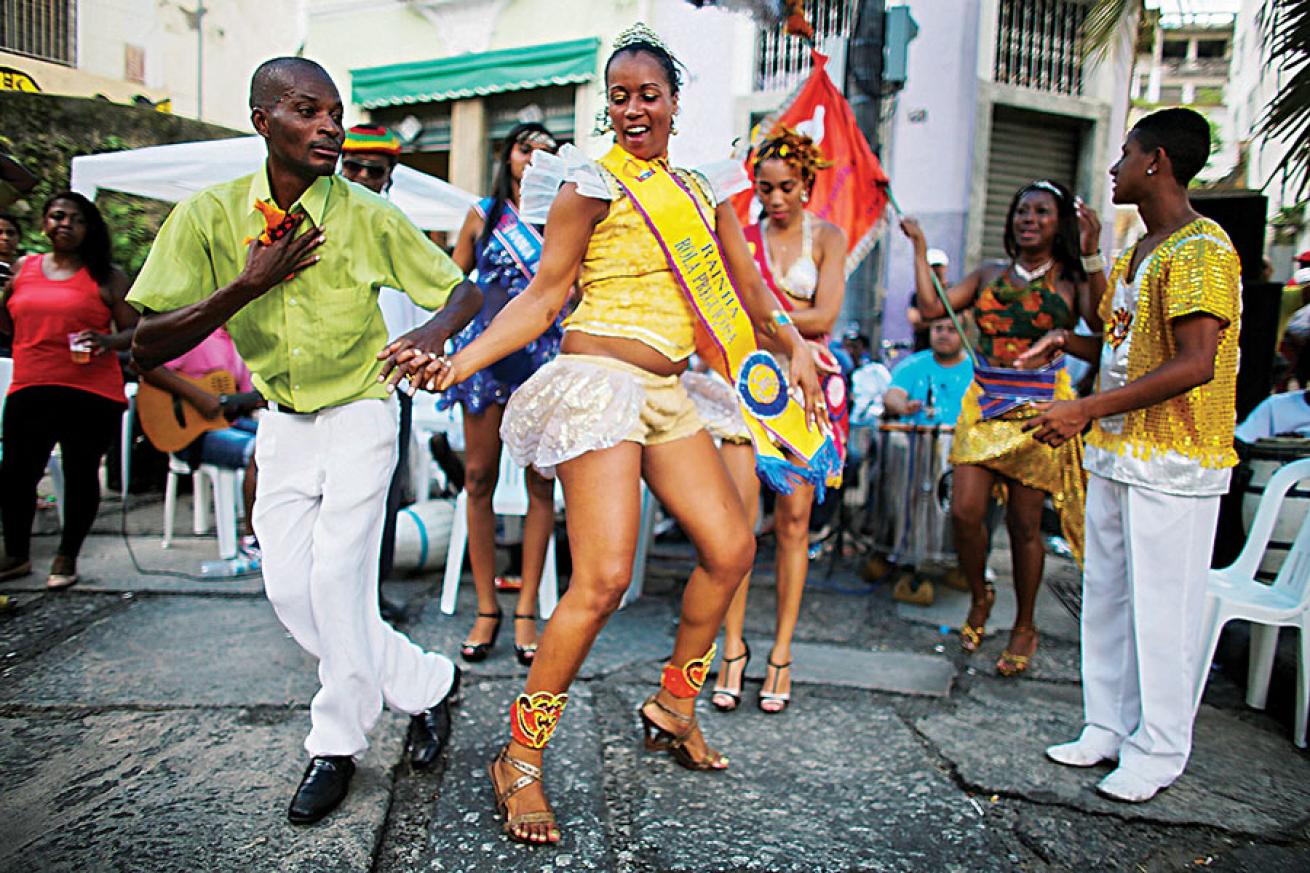
Mario Tama/Getty ImagesBrazilian pop, forró, samba: There isn't a body that these beats can't move. (Except for mine.) I wanted to learn samba, that frenetic disjoining of thighs and hips, because I like the grace it brings to chaos (it's a bit like Brazil). I watched some YouTube videos, but a class in Brazil seemed perfect. Then a local told me to just go out and try it. That's how Brazilians learn, after all. So should you ever find yourself at a bar late one night, sitting outside under the thatch and watching the dance floor fill, here's the best tip I was given: "Just watch what shakes."

Kadu PinheiroA school of squirrelfish on the tugboat Marte in Recife, one of 75 wrecks in the area.
Will I Finally Get to Samba?
Over the next few days, the fun really sets in. Each day we eat a breakfast of fried tapioca, catch a ride to the dock, and spend hours finning around in 83-degree bliss. I float past shelves and overhangs splattered in blues, yellows and greens, and watch the turtles and eagle rays at Caverna da Sapata. I lose count of the sharks at Brothers Bay. The most playful divemaster in the country, a fireball named Sambuco, does his safety stop humming the Mission: Impossible theme, hanging upside down on a sausage. “It’s really hard not to be happy here,” Douglas winks.
That night at Zé Maria, I decline Mr. Maria’s offer to sing, and recalibrate my bagunça gears. I decide to stop asking people about samba and just go for it, on my own, in an open-air club. That night my legs fail me, so the next day I return to what I do best: walking along beaches, counting dolphins off the bow, and zooming around on a placa sub — Portuguese for “clutching a plastic sled while being towed with a mask and snorkel behind a slow-moving motorboat.” For 20 minutes I fly past turtles, through coral canyons and over a wreck. I wish every place offered placa sub.
On the last night, I catch the sunset with dozens of Brazilians gathered at the hilltop ruins of a 17th-century fort. The Atlantic becomes a sheet of purple metal, and the clouds glow like jack- o’-lanterns. When the last bits of molten sky drip into the sea, people actually clap. Paradise, indeed.
A van is waiting to take folks into town, so I slide in next to a young lady in a yellow sundress. I say hi.
“I hear you want to samba,” she says, out of the blue. Before I can answer, we both begin to laugh.
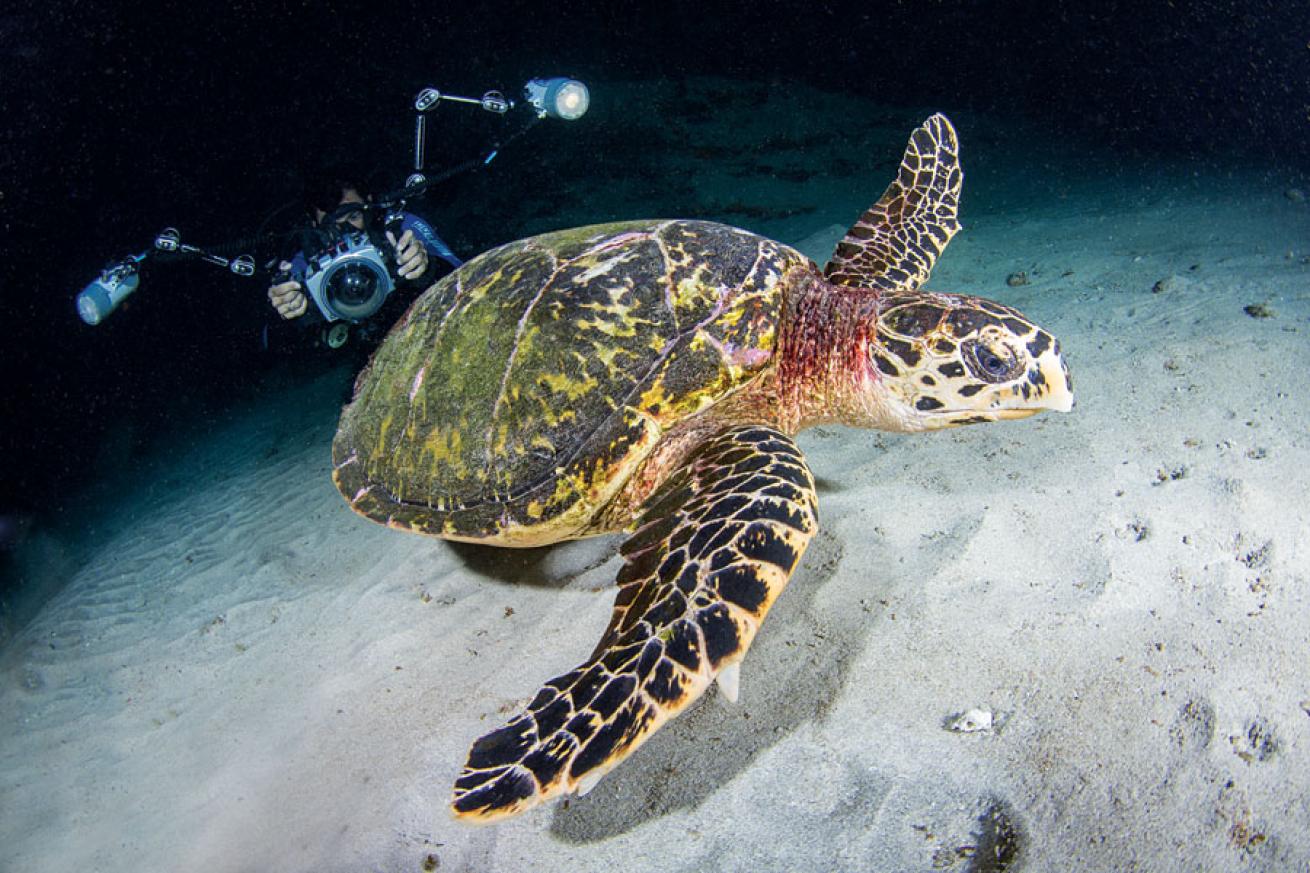
Kadu PinheiroA green turtle plays coy for a visitor on a night dive at Caverna da Sapata in Fernando de Noronha.
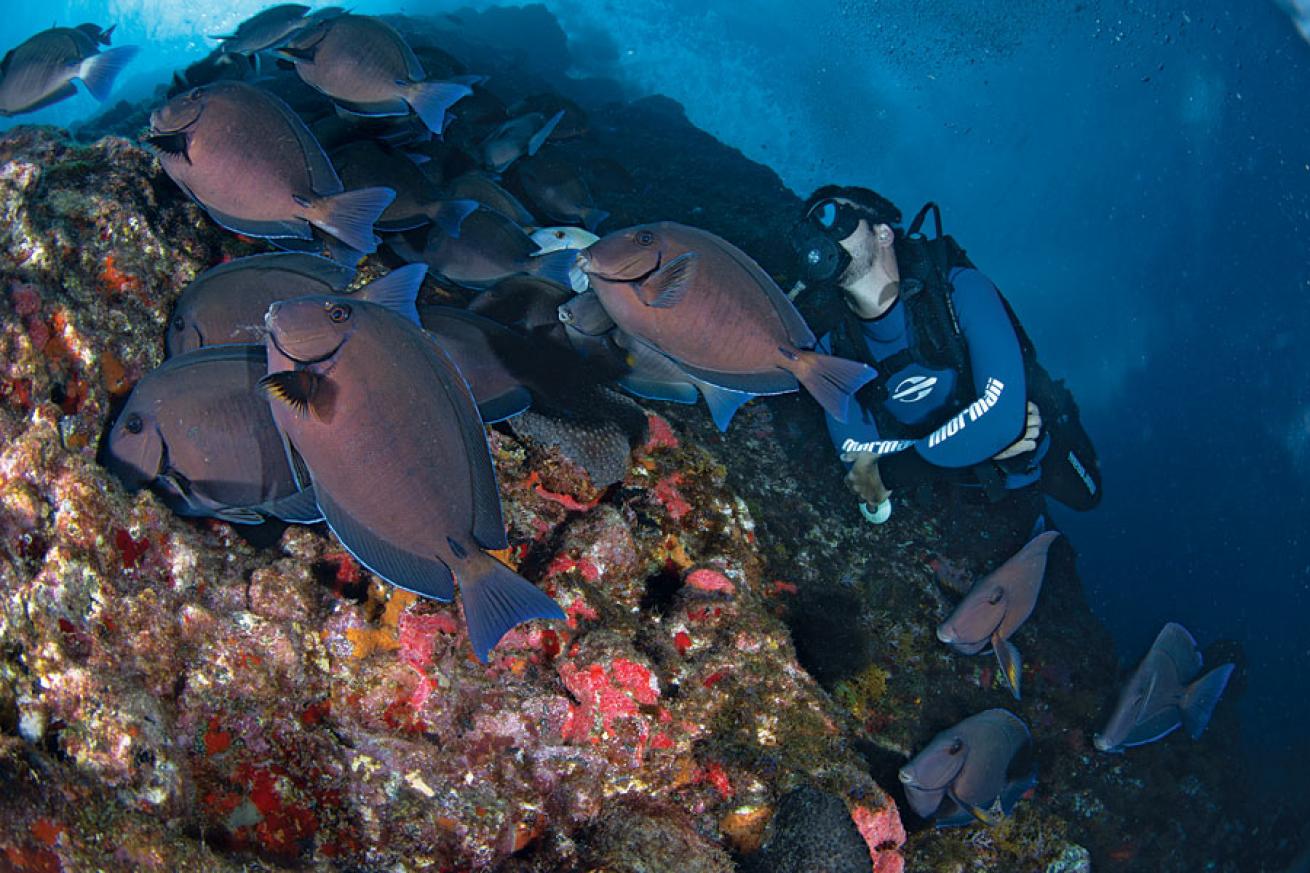
Kadu PinheiroA school of blue tang swim with a diver near Caverna da Sapata on Fernando de Noronha.
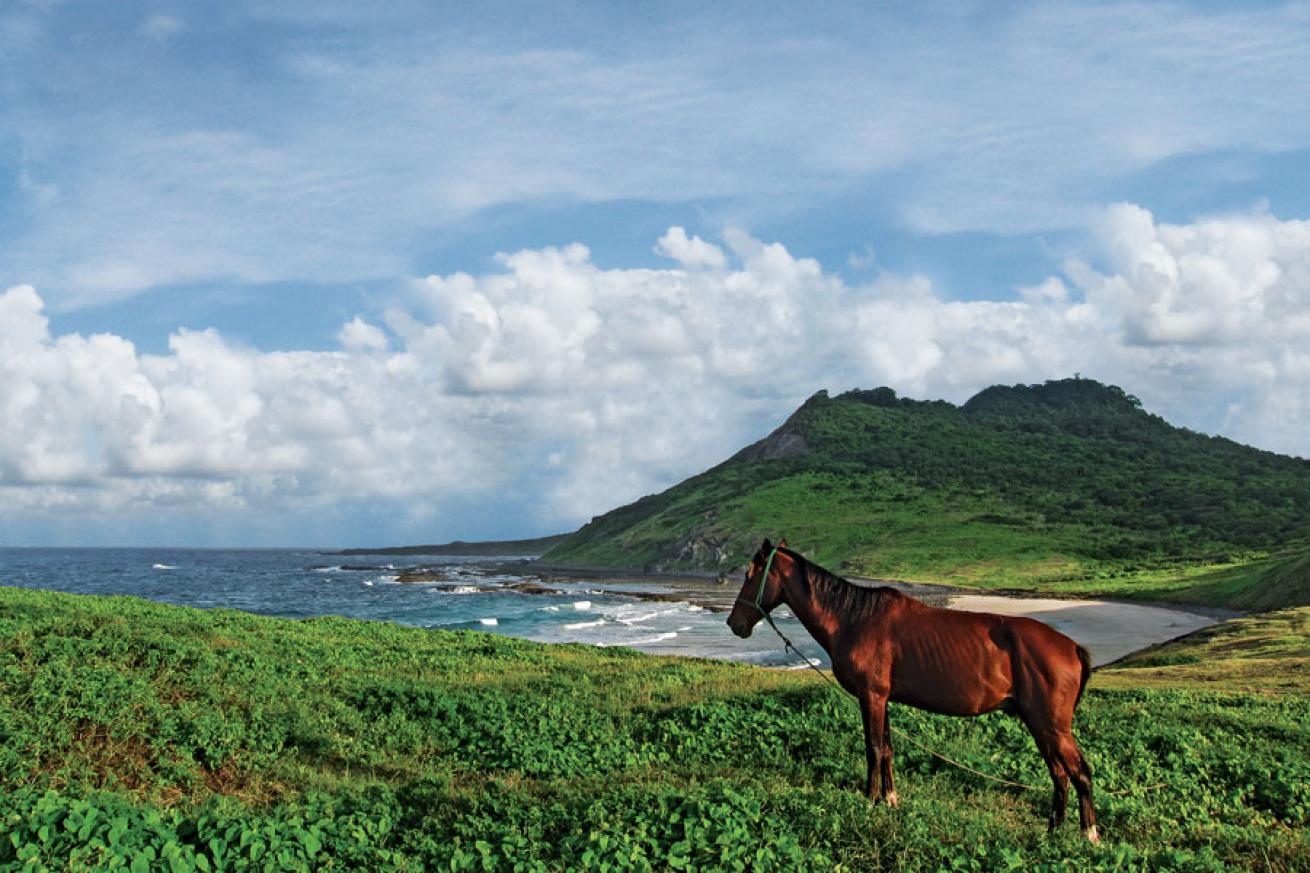
Kadu PinheiroHorses and humans alike enjoy the vista at Buraco da Raquel on Fernando de Noronha.

Feng Li/Getty ImagesIf there is anything Brazilians love more than beaches, food and good company, it's a contested futebol match with everyone watching. Soccer fever will be magnified to carnival proportions this summer as milions of people descend on Rio, São Paulo, Recife and other cities for the 2013 World Cup soccer tournament from June 12 to July 13. If you want to see Brazil crank the fun to full-throttle, there’s no better time to go.
Tickets could be tough to get if you don’t have them already. Visit Fifa.com for more details.


